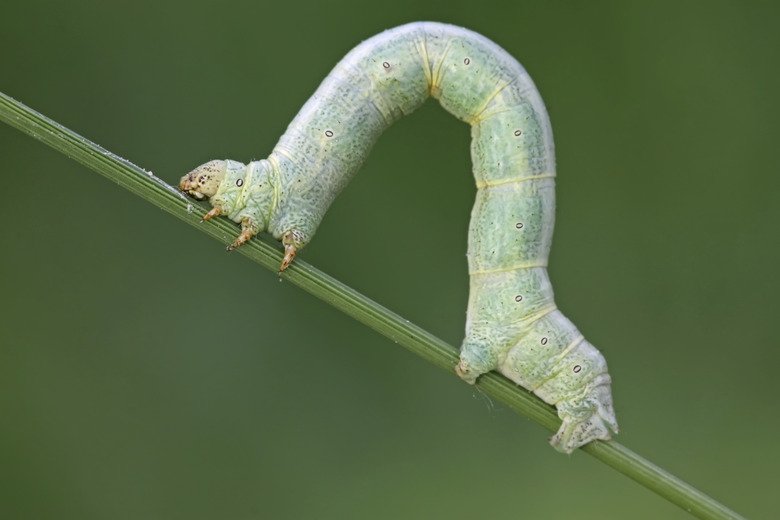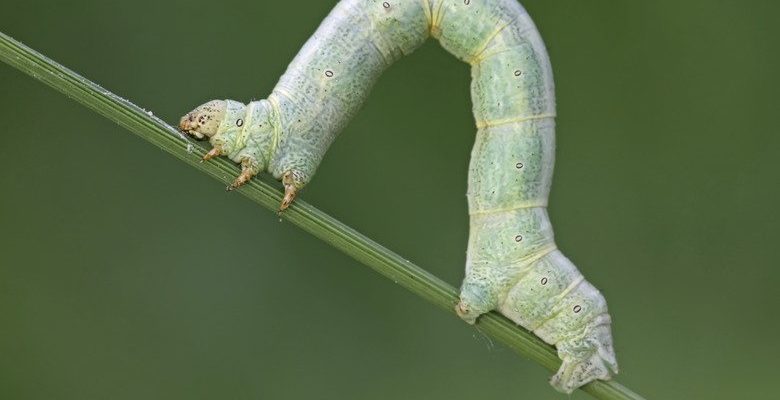
The inchworm, which is the larval stage of the moth, experiences a fascinating journey from a tiny caterpillar to a beautiful moth. This process is known as *complete metamorphosis*, and it plays out in four distinct stages: egg, larva (caterpillar), pupa (chrysalis), and adult moth. Let’s dive into the life cycle of these intriguing creatures and explore how each stage contributes to their development and survival.
The Egg Stage: A New Beginning
The first stage of the inchworm’s life cycle begins when a female moth lays her eggs. These eggs are often small and can be found on the underside of leaves to provide a little extra camouflage and protection. Think of them as tiny homes waiting to hatch. Depending on the species, a female moth can lay hundreds of eggs at once!
Within just a few days or weeks, depending on environmental conditions, the eggs hatch into larvae. This is a crucial time for the inchworms, as the safety of the leaves helps protect them from predators. As they emerge, they are incredibly hungry and ready to munch on the leaves around them.
Here’s the thing: these little caterpillars are not just eating machines; they’re also gathering energy that they will need for the next stages of their life. With every bite, they are preparing for their transformation ahead.
The Larval Stage: The Inchworm’s Caterpillar Phase
Once hatched, the inchworms enter the larval stage, which is when they start to grow significantly. This phase is marked by the inchworm’s distinctive crawling motion, where it moves in a characteristic “inching” style. It’s almost like they’re learning to navigate their world one little foot at a time!
During this stage, the inchworm will molt several times—shedding its skin as it grows. This might sound a bit gross, but it’s completely normal. Each time it sheds, it allows for more growth and prepares the caterpillar for its big change. Imagine trying on new clothes that fit better as you grow taller!
As the inchworm munches away on leaves, it also needs to be wary of predators. Birds and other insects are always on the lookout for a tasty snack. Some inchworms use camouflage or even mimicry to hide from danger. For example, they might look like twigs or leaves, making it harder for predators to spot them.
The Pupal Stage: Preparing for Transformation
After several weeks of eating and growing, the inchworm is ready to enter the pupal stage. This is a fascinating part of the life cycle where the caterpillar finds a safe spot to undergo its transformation. It might spin a silk thread to attach itself to a branch or find a cozy nook among the leaves.
Once settled in, the inchworm forms a protective casing around itself, known as a chrysalis or pupa. During this time, which can take anywhere from a few days to several weeks, the magic of metamorphosis occurs. Inside the chrysalis, the caterpillar’s body breaks down and reorganizes, transforming its cells into the various structures that will become the adult moth.
It’s a bit like going through a major renovation; everything might look quiet on the outside, but there’s a lot of work happening beneath the surface. The inchworm is slowly evolving, preparing for its debut as a moth.
The Adult Stage: Emerging as a Moth
Finally, the moment arrives when the adult moth breaks free from its chrysalis. This is an astonishing event! As the new moth emerges, its wings are crumpled and wet. It takes some time for them to dry and expand fully, but once they do, the moth is ready to take flight.
Adult inchworms, or moths, typically have a short lifespan, ranging from a few weeks to a couple of months, depending on the species. During this adulthood, their primary focus is reproduction. Female moths often seek out a mate to lay eggs, and the cycle begins all over again.
Moths are often drawn to light, which can lead them into homes and gardens. It’s always a delight to see them fluttering around at night, showcasing the beauty that evolved from those tiny, wiggly caterpillars.
The Importance of Inchworms in Nature
Inchworms play a vital role in our ecosystem. They serve as food for various birds and other wildlife, contributing to the food chain. While it may seem like they only exist to be eaten, their presence is essential for maintaining balance in nature.
Additionally, as inchworms munch on leaves, they also help control plant growth. Some species of inchworms can, however, become pests when they overpopulate in certain areas, causing damage to trees and gardens. Gardeners need to keep an eye on their leaves to ensure inchworms don’t munch too much!
It’s also worth noting that the adult moths contribute to pollination. Just like butterflies, they visit flowers, helping plants reproduce while they search for nectar. This connection highlights the beautiful interdependence of nature.
From tiny eggs to inch-worming caterpillars, and finally to delicate moths, the life cycle of inchworms is nothing short of remarkable. These creatures remind us of the beauty of transformation and the intricate processes that occur in nature.
As you ponder the next inchworm you see crawling along, take a moment to appreciate its journey. It’s not just a simple caterpillar—it’s a symbol of resilience and change. Whether you’re watching one inch along a branch or learning about their life cycle, you’re witnessing a small miracle of nature in action.
Next time you spot an inchworm, you might just smile and think of all the amazing steps it took to become what it is today. After all, every inch matters!

